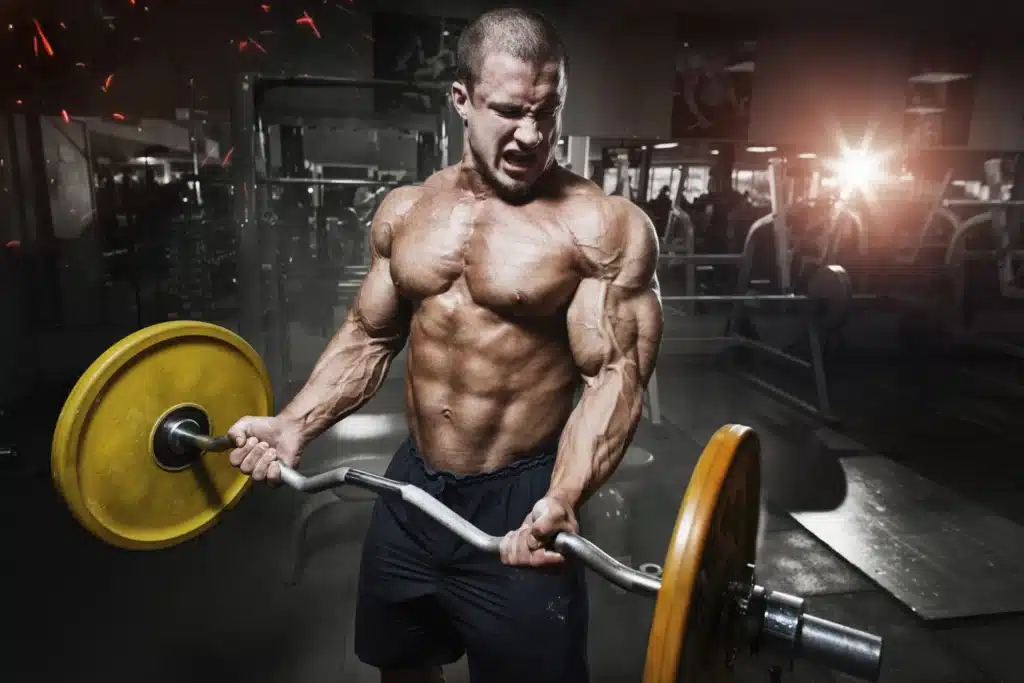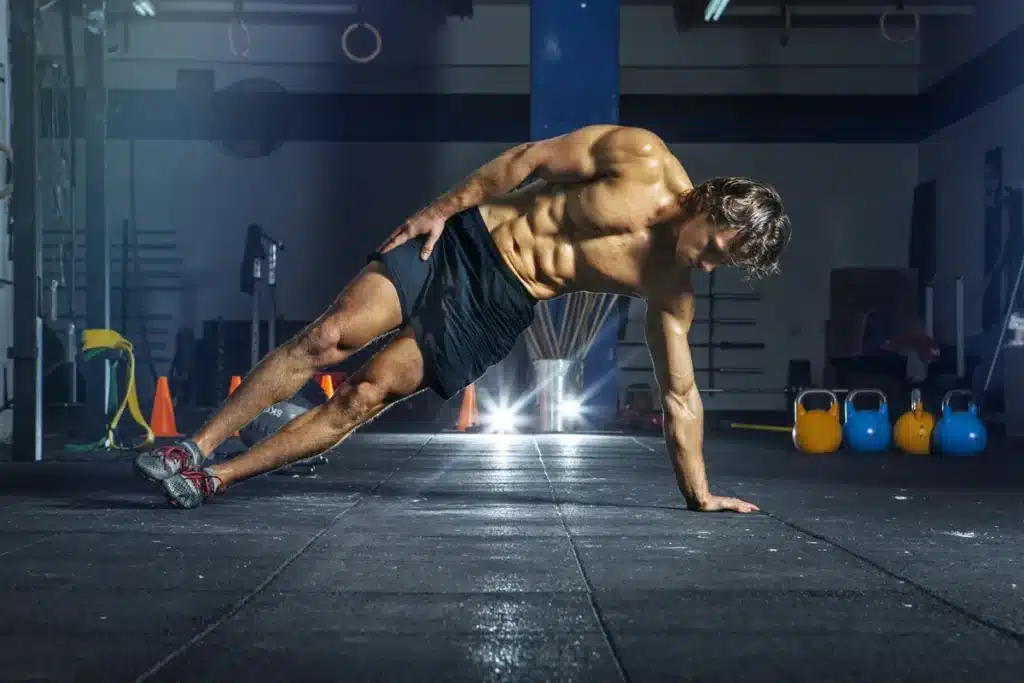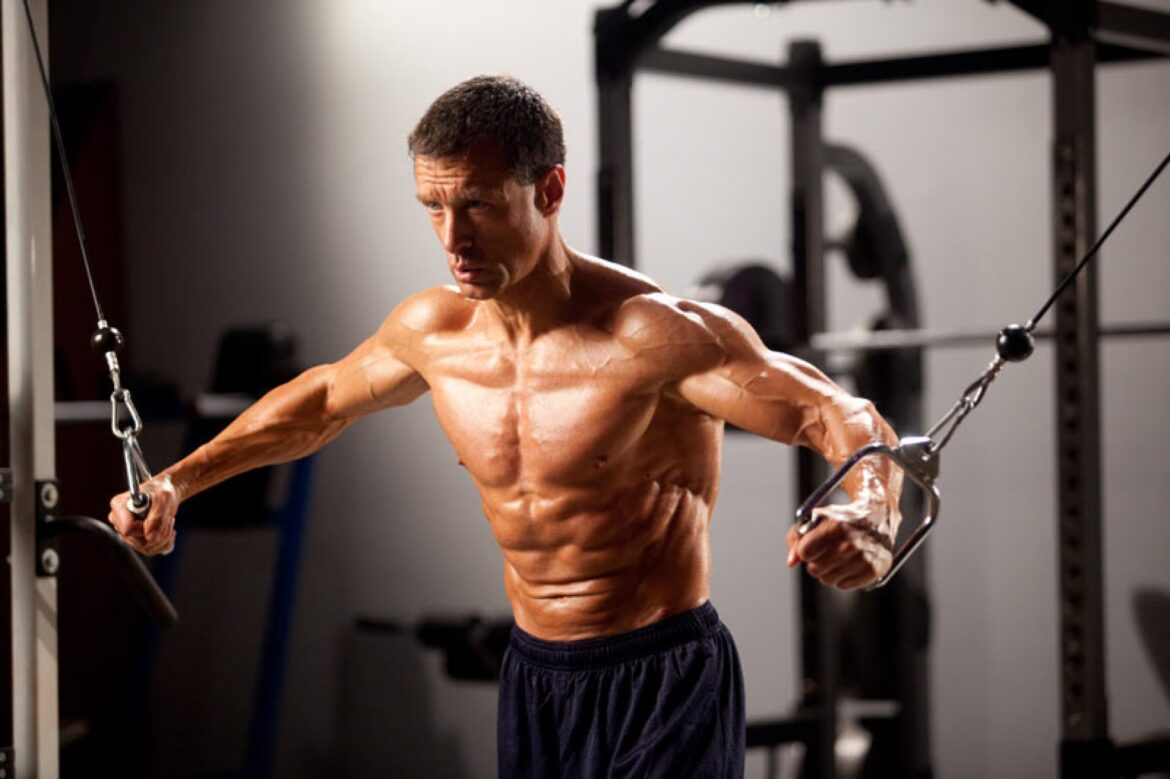Introduction
How To Set Up Lighting For Bodybuilding: Lighting is a crucial aspect of bodybuilding that often goes underestimated. Whether you’re a seasoned bodybuilder or just embarking on your fitness journey, the way you set up your lighting can significantly impact your training, progress tracking, and overall results. In the world of bodybuilding, where the play of light and shadow can accentuate muscle definition and aesthetics, understanding how to optimize your lighting setup is essential. This exploration delves into the art and science of lighting for bodybuilding. We will uncover the fundamental principles of lighting that enhance muscle visibility and define the physique. Whether you’re preparing for a competition, capturing progress photos, or simply training to build a more sculpted physique, mastering the art of lighting can make a substantial difference in how you see and present your body.
From the angle of light to the type of lighting equipment, we will explore the intricacies of setting up lighting for bodybuilding and offer insights into achieving that well-lit and chiseled look that defines the sport.In the pursuit of the perfect physique, bodybuilders know that lighting can be their best friend or their worst enemy. Properly set up lighting can accentuate muscle definition, highlight the results of hard work, and create striking visuals. On the flip side, poor lighting can obscure details, diminish the impact of a physique, and hinder the assessment of progress.
This exploration into the art of setting up lighting for bodybuilding delves deeper into the nuances of this essential aspect of the sport. We will uncover the science behind how light interacts with the body, how angles and intensity can make muscles pop, and the role of shadows in creating that coveted aesthetic.Whether you’re stepping on stage, capturing progress photos, or simply training to build a more sculpted physique, understanding how to manipulate and harness light effectively is a skill that can elevate your journey.

What is the best lighting position for bodybuilding?
It might be tempting to directly face your light source, but we’d recommend avoiding this. Instead, hold your chin up, stand strong and face sideways to the light. This will give more depth to your muscle definition as it creates shadow to your fitness shot.The best light position for bodybuilding, especially when it comes to stage lighting for competitions versus photography, can differ significantly.
Stage Lighting for Bodybuilding Competitions:
- On-stage lighting for bodybuilding competitions is carefully designed to create a dramatic and aesthetic effect. This typically involves overhead lighting that casts shadows in a way that enhances muscle definition and showcases the competitor’s physique.
- The aim of stage lighting in bodybuilding competitions is to create a balance between highlights and shadows, accentuating muscle separation and contours. The precise positioning of stage lights may vary from one competition to another.
- Competitors should focus on posing and presentation to make the most of stage lighting during their performance. The angles at which you position your body during posing can greatly affect how the lighting highlights your muscles.
Photography Lighting for Bodybuilding:
- Photography lighting for bodybuilding photoshoots or progress tracking is a different consideration. Natural lighting or studio lighting setups can be used to capture the physique in a more controlled environment.
- The best lighting position for bodybuilding photography often involves diffused lighting. This can be achieved through softbox lights, umbrellas, or other diffusion methods. The goal is to minimize harsh shadows and create a well-lit, evenly exposed image.
- In bodybuilding photography, side lighting or three-point lighting setups are commonly used to highlight muscle definition without casting distracting shadows. These setups can accentuate the contours and details of the physique.
What is the best light position?
The best solution should be wall lamps with an indirect light ray pointing at the ceiling, so that you can get a not too intense but uniform light. For your bedroom you should use gentle light.The best lighting position for bodybuilding photography is typically achieved by using a side-lighting or three-point lighting setup.
Here’s why this lighting position is favored:
Enhanced Muscle Definition: Side lighting, where the light source is positioned to the side of the subject, creates shadows that accentuate muscle definition. This adds depth and dimension to the physique, making muscles appear more pronounced and sculpted.
Reduced Harsh Shadows: While shadows are essential for highlighting muscle contours, excessive or harsh shadows can be distracting. A three-point lighting setup includes a key light (main light source), a fill light (softens shadows), and a backlight (separates the subject from the background). This combination helps control shadows, ensuring they enhance the physique without overwhelming the image.
Balanced Illumination: A well-positioned side light provides balanced illumination across the body, preventing overexposed or underexposed areas. This ensures that all muscle groups receive adequate attention and visibility.
Highlighting Symmetry: Side lighting is particularly effective for highlighting the symmetry of the bodybuilder’s physique. It showcases the proportions and balance between muscle groups, an essential aspect of bodybuilding aesthetics.
Minimized Flare and Glare: Side lighting minimizes lens flare and glare, which can be problematic when shooting in a direct light source. This ensures a clear and sharp image of the subject.
What is the ideal lighting setup for bodybuilding photography?
The ideal lighting setup for bodybuilding photography often involves a side-lighting or three-point lighting arrangement. This includes a key light (main light source), a fill light (softens shadows), and a backlight (separates the subject from the background).
Exactly, the ideal lighting setup for bodybuilding photography typically consists of a three-point lighting system, which includes:
Key Light: This is the main light source and is usually positioned to one side of the bodybuilder. It provides the primary illumination for the subject, highlighting muscle definition and contours. The angle and intensity of the key light play a crucial role in shaping the physique.
Fill Light: The fill light is used to soften shadows created by the key light. It is often placed on the opposite side of the key light to provide even and balanced lighting. The fill light helps reduce harsh shadows, creating a more flattering and sculpted appearance.
Backlight: The backlight, also known as a hair light, is positioned behind the subject. Its purpose is to separate the bodybuilder from the background and add depth to the image. It creates a rim of light around the edges of the body, enhancing the subject’s outline.
Why is side lighting preferred for bodybuilding photography?
Side lighting is favored because it creates shadows that enhance muscle definition and add depth to the physique. It highlights the sculpted appearance of muscles while maintaining a balanced and controlled lighting effect.
Side lighting is preferred for bodybuilding photography for several key reasons:
Enhanced Muscle Definition: Side lighting creates shadows that fall on the muscles, emphasizing their contours and separation. These shadows help define and showcase the sculpted appearance of the muscles, making them appear more pronounced and well-defined.
Added Depth: The shadows produced by side lighting add depth to the physique, creating a three-dimensional effect. This depth enhances the overall visual impact of the image and makes the subject stand out.
Highlighting Symmetry: Side lighting is particularly effective for highlighting the symmetry of the bodybuilder’s physique. It showcases the proportions and balance between muscle groups, an essential aspect of bodybuilding aesthetics.
Balanced Illumination: Side lighting provides balanced illumination across the body, preventing overexposed or underexposed areas. This ensures that all muscle groups receive adequate attention and visibility in the photograph.
Reduced Flare and Glare: Side lighting minimizes lens flare and glare, which can be problematic when shooting with strong, direct light sources. This helps maintain a clear and sharp image of the subject.
What equipment is essential for bodybuilding, photography and lighting?
Essential equipment includes softbox lights, umbrellas, or diffusers to soften and diffuse the light source. Additionally, light stands, reflectors, and backdrops may be used to achieve the desired lighting effect.
Indeed, essential equipment for bodybuilding photography and lighting includes:
Softbox Lights: Softbox lights are commonly used to diffuse and soften the light source. They help create even, flattering lighting that reduces harsh shadows on the subject’s body. Softboxes come in various sizes and shapes, allowing for flexibility in lighting control.
Umbrellas: Umbrellas, both reflective and shoot-through types, are used to diffuse and spread light evenly. Reflective umbrellas bounce light back onto the subject, while shoot-through umbrellas let light pass through for a softer effect.
Diffusers: Diffusers can be placed in front of light sources to scatter and soften the light, reducing harsh shadows and creating a gentle, even illumination. They are particularly useful for achieving a pleasing skin texture in bodybuilding portraits.
Light Stands: Sturdy light stands are essential for holding and positioning lighting equipment at the desired angles and heights. They provide stability and flexibility for directing light where it’s needed.
Reflectors: Reflectors bounce light back onto the subject to fill in shadows and add highlights. They come in various colors, including silver, gold, and white, each producing a different effect on the lighting.
How should the bodybuilder position themselves in relation to the light source?
The bodybuilder should stand strong, hold their chin up, and face sideways to the light source. This positioning creates shadows that highlight muscle definition and symmetry.The positioning of the bodybuilder in relation to the light source is crucial for achieving the desired lighting effects in bodybuilding photography.
Here’s how the bodybuilder should position themselves:
Stand Strong: The bodybuilder should stand in a confident and upright posture. Good posture not only showcases the physique better but also exudes confidence and professionalism.
Chin Up: The bodybuilder should hold their chin up slightly or at a neutral position. This helps define the jawline and neck muscles, contributing to a more aesthetically pleasing image.
Sideways to the Light: The bodybuilder should face sideways to the main light source. This positioning allows the light to cast shadows on the muscles, accentuating their definition and contours. It creates a sculpted appearance that showcases the hard-earned muscle definition.
Angle Adjustment: Depending on the specific muscle group or area the bodybuilder wants to highlight, slight adjustments in the angle of the body and limbs can be made. Experimenting with different angles can help emphasize specific muscle groups for a more dynamic composition.
Maintain Symmetry: Bodybuilders often aim for symmetry in their physique, so it’s essential to maintain symmetry in the pose. Balanced positioning of both sides of the body ensures that all muscle groups are equally highlighted.
What role does diffusion play in bodybuilding lighting?
Diffusion is crucial for achieving even and soft lighting in bodybuilding photography. Softening the light helps control harsh shadows, making the physique appear more sculpted and balanced.Diffusion in bodybuilding lighting serves a critical role in achieving desirable and flattering results.
Here’s how diffusion impacts bodybuilding lighting:
Soften and Even Out Lighting: Diffusion materials, such as softboxes, umbrellas, or diffuser panels, scatter and disperse light rays, reducing the intensity of direct light. This diffusion creates a gentle and even illumination across the subject, preventing harsh contrasts and overly pronounced shadows.
Control Harsh Shadows: Harsh shadows can obscure muscle definition and detract from the overall aesthetics of the physique. Diffusion helps control and soften these shadows, revealing muscle contours while maintaining a balanced look.
Enhance Skin Texture: In bodybuilding photography, achieving a smooth and flattering skin texture is essential. Diffusion softens the appearance of skin imperfections, creating a more polished and appealing portrayal of the subject.
Create a Sculpted Appearance: By controlling the intensity of light, diffusion contributes to a sculpted and well-defined look. It accentuates muscle separation and contours, helping to showcase the physique in its best form.
Minimize Glare and Reflections: Diffusion materials can reduce glare and reflections on the skin’s surface, ensuring that the subject’s features are clearly visible without distracting highlights.
Why is controlling shadows important in bodybuilding lighting?
While shadows are essential for highlighting muscle contours, excessive or harsh shadows can be distracting. Controlling shadows ensures they enhance the physique without overwhelming the image, creating a balanced and visually appealing result.
Controlling shadows in bodybuilding lighting is crucial for several important reasons:
Highlight Muscle Definition: Shadows play a significant role in highlighting muscle definition and contours. They add depth and dimension to the physique, making muscles appear more pronounced and sculpted. Properly controlled shadows accentuate the hard work and dedication that bodybuilders invest in their training.
Avoid Distracting Shadows: Excessive or harsh shadows can become distracting and detract from the overall aesthetics of the image. These distracting shadows may obscure details, make the image look cluttered, or draw attention away from the subject’s physique.
Maintain a Balanced Look: Controlling shadows ensures a balanced and well-composed photograph. By carefully managing the interplay of light and shadow, photographers can create a harmonious composition that draws attention to the subject’s strengths and proportions.
Showcase Symmetry: Bodybuilders strive for symmetry and proportionality in their physiques. Controlled shadows help emphasize the symmetry of muscle groups, creating a more visually pleasing and balanced portrayal.
Professional Quality: Controlling shadows is a hallmark of professional-quality bodybuilding photography. It demonstrates a mastery of lighting techniques and attention to detail, contributing to the overall professionalism of the image.

Conclusion
The art of setting up lighting for bodybuilding is a delicate and nuanced craft that holds immense significance in capturing the essence of this sport. Lighting isn’t merely about illuminating the subject; it’s about sculpting the physique, enhancing muscle definition, and telling a compelling visual story. Bodybuilding lighting revolves around the strategic use of light and shadow to showcase the hard work, dedication, and symmetry of the athlete’s physique.
A well-thought-out lighting setup, often featuring a three-point system, creates a balanced and aesthetically pleasing image. Side lighting, in particular, is favored for its ability to accentuate muscle definition and depth. Diffusion, a key element, softens and evens out the light, making the physique appear more sculpted and balanced, while careful shadow control ensures that shadows enhance rather than distract from the overall aesthetics.
Whether on stage, in a studio, or for progress photos, mastering the art of bodybuilding lighting is essential for presenting the bodybuilder’s dedication and achievement in the best possible light, both literally and figuratively. It’s a blend of science and artistry that elevates the portrayal of the physique to a higher level, making each image a testament to the dedication and hard work of bodybuilders

